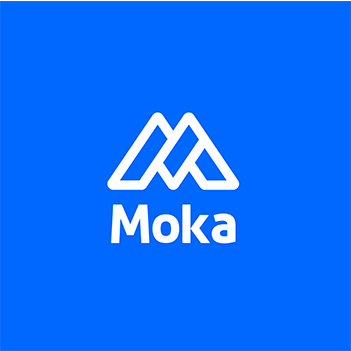How HR SaaS Tools Simplify Online Training Program Creation

Creating an online training program with HR SaaS can feel much more manageable compared to traditional methods. Many businesses struggle to prove ROI, measure training effectiveness, or gather data to showcase value. By using HR SaaS tools, you can eliminate delays and inefficiencies that often arise when coding skills or developers are needed to build engaging content. These tools provide intuitive platforms that simplify the process of creating, delivering, and tracking training programs. Leveraging HR SaaS ensures your eLearning initiatives are efficient, impactful, and data-driven.
Key Takeaways
HR SaaS tools make online training easier to create and manage.
Automated tools save time by managing tasks like sign-ups and tracking.
Custom courses match employee needs, improving interest and learning results.
Built-in reports show how well training works, helping improve programs.
HR SaaS tools save money compared to old training methods but still teach well.
Understanding HR SaaS Tools for eLearning

What Are HR SaaS Tools?
HR SaaS tools are cloud-based platforms designed to simplify and enhance employee training processes. These tools allow you to create, manage, and deliver online employee training programs efficiently. They integrate seamlessly with a learning management system (LMS), enabling you to automate tasks like course enrollment, reminders, and progress tracking. By using these tools, you can develop a culture of continuous learning within your organization. They also offer customizable courses tailored to your team’s specific needs, covering both technical and soft skills.
With HR SaaS tools, you gain access to detailed analytics that measure training effectiveness. These insights help you track employee progress and identify areas for improvement. The automation features save time and reduce manual effort, making it easier to scale your training programs as your team grows.
The Importance of HR SaaS in eLearning Programs
HR SaaS tools play a critical role in modern eLearning programs. They streamline the creation and delivery of training content, ensuring that your employees receive relevant and engaging learning experiences. These tools also help you manage training schedules efficiently, reducing the administrative burden on your HR team.
Feature | Description |
|---|---|
Customizable courses | Tailor content to specific needs, ensuring relevant learning for team members. |
Automation features | Streamline learning processes, automate enrollment, and manage training schedules efficiently. |
Detailed analytics | Measure training effectiveness, track progress, and identify areas for improvement. |
By leveraging these features, you can improve employee engagement and retention while driving better outcomes for your eLearning program.
How HR SaaS Tools Support Training for SaaS
HR SaaS tools are particularly valuable for training in SaaS companies. They support onboarding training to help new hires adapt to company culture and expectations. These tools also facilitate technical skills training, ensuring employees can effectively use software and tools essential for their roles. Additionally, they enable professional development training, focusing on upskilling and soft skills.
Using HR SaaS tools for SaaS training improves productivity by equipping employees with the knowledge they need to excel. It also reduces turnover by fostering a sense of growth and job satisfaction. The digital nature of these tools saves time and costs, making them an efficient solution for delivering standardized product training across teams.
Steps to Create an Online Training Program with HR SaaS
Conducting a Needs Assessment
A needs assessment is the foundation of any successful eLearning program. It helps you identify gaps in skills and knowledge among your employees. Follow these steps to conduct an effective assessment:
Scope the assessment by deciding its focus and extent.
Collect data to understand current capabilities and challenges.
Analyze the data to pinpoint specific training needs.
Identify skills gaps and opportunities for improvement.
Prioritize training areas that offer the highest ROI.
Engage stakeholders to ensure the assessment aligns with organizational goals.
Develop an action plan to address the identified needs.
Implement the training initiatives based on your plan.
Evaluate and adjust the program to improve its effectiveness.
By following these steps, you can create a targeted and impactful online employee training program.
Setting Goals for Your eLearning Program
Clear and measurable goals are essential for a successful eLearning program. Define meaningful actions that learners should take during the training. Ensure these actions result in observable behavior. Include quantifiable criteria to assess performance. For example, you might aim to improve employees' proficiency in using a specific SaaS platform by 20% within three months. Setting such goals ensures your training program delivers tangible results.
Designing and Customizing Training Content
HR SaaS tools make it easy to design and customize training content. Platforms like eloomi allow you to create tailored courses that address your team’s unique needs. You can develop content for technical skills, soft skills, or even product training. Customization ensures the training resonates with employees and aligns with their roles. This approach not only enhances engagement but also boosts retention and overall program effectiveness.
Using HR SaaS Tools for Content Creation and Distribution
HR SaaS tools simplify the process of creating and distributing training content. These platforms provide user-friendly interfaces that allow you to design engaging courses without requiring technical expertise. You can use templates, drag-and-drop features, and multimedia integration to create interactive lessons. This flexibility ensures your training content aligns with your organization's goals and resonates with employees.
Once you create the content, HR SaaS tools make distribution seamless. They integrate with your LMS, enabling you to assign courses to employees based on their roles or skill levels. Automated notifications ensure employees stay informed about upcoming training sessions or deadlines. This automation reduces manual effort and ensures timely delivery of training materials.
These tools also support scalability. As your team grows, you can easily add new employees to the system and assign relevant training. Whether you’re focusing on product training, onboarding, or professional development, HR SaaS tools help you deliver consistent learning experiences across your organization. This approach not only saves time but also enhances employee engagement and retention.
Tracking and Analyzing Training Outcomes
Tracking and analyzing training outcomes is essential for measuring the success of your eLearning program. HR SaaS tools provide built-in analytics that give you valuable insights into employee performance and program effectiveness. By leveraging these analytics, you can identify areas for improvement and make data-driven decisions.
Here are some key metrics you can track using HR SaaS tools:
Metric | Description |
|---|---|
Training Completion Rate | The percentage of employees who completed a given training. |
Time to Completion | The average time taken for an employee to finish a training program. |
Training Effectiveness | Measurement of training success through tests or assessments to determine pass/fail rates. |
Training Expenses per Employee | The total training costs divided by the number of employees, indicating the financial investment in training. |
These metrics help you evaluate the efficiency of your training programs. For example, a high completion rate indicates that employees find the content accessible and engaging. On the other hand, tracking time to completion can reveal whether the training is too lengthy or complex. By analyzing these insights, you can refine your eLearning program to better meet the needs of your employees.
HR SaaS tools also allow you to generate detailed reports. These reports can be shared with stakeholders to demonstrate the ROI of your training initiatives. With this data, you can continuously improve your saas training program and ensure it delivers maximum value.
Key Features of HR SaaS Tools for Training
Automation and Workflow Optimization
HR SaaS tools simplify your workflow by automating repetitive tasks. These platforms allow you to manage employee records, payroll, and compliance online without requiring on-site installations. Automation features like AI-driven messaging and behavioral nudges help you personalize communication and reinforce company culture. You can also use pre-built templates to streamline tasks such as onboarding and employee communication.
For example, these tools enable pre-onboarding communication and guide new hires through a 90-day onboarding journey. Time-tracking features, including mobile clock-in and automated overtime calculations, further optimize your processes. By automating routine tasks, you save time and reduce errors, allowing you to focus on creating impactful training programs.
Built-in Analytics and Reporting
Built-in analytics in HR SaaS tools provide valuable insights into your training programs. Platforms like eloomi track employee progress, identify skill gaps, and predict future performance. These analytics help you make data-driven decisions to improve your eLearning initiatives.
You can measure metrics like completion rates, time to completion, and training effectiveness. This data allows you to refine your program and ensure it meets your employees' needs. Additionally, analytics optimize talent processes such as recruitment and retention, making your organization more efficient. With detailed reporting, you can demonstrate the ROI of your training efforts to stakeholders.
Scalability for Growing Teams
HR SaaS tools grow with your organization. Platforms like BambooHR and SAP SuccessFactors offer scalable features that adapt to your needs. Cloud-based systems provide flexible data storage, while APIs and integrations connect seamlessly with other tools.
As your team expands, you can customize workflows and add features to support new employees. Scalable solutions also automate routine tasks, reducing administrative burdens. Subscription pricing tailored to your business size ensures cost-effectiveness. Whether you’re delivering product training or onboarding new hires, these tools maintain consistency and efficiency as your organization evolves.
Integration with Learning Management Systems (LMS)
Integrating HR SaaS tools with a learning management system (LMS) creates a unified platform for managing employee training. This integration ensures that your training programs run smoothly by connecting essential systems like HR, payroll, and IT. A seamless connection between these platforms allows data to flow effortlessly, reducing manual work and improving efficiency. For example, employee records from your HR system can automatically sync with the LMS, ensuring accurate enrollment and tracking.
An LMS integration also enhances the learning experience for employees. You can assign courses based on job roles, skill levels, or career goals. Employees can access training materials directly through the LMS, making it easier for them to stay engaged. Automated notifications remind employees about deadlines or upcoming sessions, ensuring they stay on track. This streamlined approach saves time and ensures consistent delivery of training content.
Another advantage of integrating HR SaaS tools with an LMS is the ability to generate comprehensive reports. These reports combine data from multiple systems, giving you a complete view of training outcomes. For instance, you can track course completion rates alongside employee performance metrics. This data helps you identify areas for improvement and make informed decisions about future training initiatives.
Scalability is another key benefit. As your organization grows, the integration allows you to onboard new employees quickly. You can assign them relevant training programs without additional manual effort. Whether you’re managing a small team or a large workforce, this integration ensures your LMS adapts to your needs.
By connecting your HR SaaS tools with an LMS, you create a powerful system that simplifies training management. This integration not only improves efficiency but also enhances the overall learning experience for your employees.
Benefits of Using HR SaaS Tools in Training Programs

Enhanced Efficiency and Time Management
HR SaaS tools significantly improve efficiency by automating repetitive tasks and streamlining workflows. These tools empower employees with self-service capabilities, allowing them to update personal information and access resources independently. This reduces the workload on HR personnel, enabling them to focus on strategic initiatives.
Here are some ways HR SaaS tools save time:
Employees can use web-based learning tools, which shorten training durations.
Onboarding programs leverage video courses to track progress effectively.
Interactive programs guide employees through new tools or software in real-time.
Some platforms allow employees to practice skills and receive feedback from peers.
By adopting these tools, you can create online training programs that are both time-efficient and impactful. This approach ensures your team spends less time on administrative tasks and more on meaningful learning experiences.
Improved Employee Engagement and Retention
HR SaaS tools foster a positive work environment that enhances employee engagement and retention. Organizations using these tools report a 21% increase in productivity and lower turnover rates. Employees feel more involved when they have access to engaging and interactive training programs.
A recent survey revealed that 84% of employees experienced increased involvement when using HR SaaS tools. These platforms provide personalized learning paths, making employees feel valued and motivated. By offering opportunities for growth and development, you can retain top talent and reduce the costs associated with high turnover. SaaS training programs also help employees build confidence in their roles, leading to higher job satisfaction.
Data-Driven Insights for Continuous Improvement
HR SaaS tools provide powerful analytics that help you refine your training programs. These insights allow you to identify skills gaps, track progress, and measure the effectiveness of your eLearning program.
Key metrics include:
Employee completion rates: Tracks how many employees finish training activities.
Competency gains: Measures skill improvements through assessments.
Increased productivity: Evaluates performance enhancements after training.
Talent retention: Analyzes the link between training and employee retention.
These tools also forecast future hiring needs and assess compensation equity. By leveraging these insights, you can continuously improve your saas training initiatives and ensure they align with organizational goals. Integrating HR SaaS tools with your LMS further enhances data collection, making it easier to optimize your training strategies.
Cost-Effective Solutions for eLearning Programs
Creating an eLearning program can seem expensive, but HR SaaS tools offer cost-effective solutions that maximize your return on investment. These tools help you save money by automating processes, reducing manual effort, and eliminating the need for expensive infrastructure.
One of the biggest advantages of HR SaaS tools is their subscription-based pricing. You pay only for what you use, which makes these platforms affordable for businesses of all sizes. Many tools also offer tiered pricing plans, allowing you to scale your investment as your team grows.
Tip: Look for platforms that provide free trials or demos. This lets you evaluate their features before committing to a subscription.
HR SaaS tools also reduce the need for in-person training sessions, which often involve travel, venue, and material costs. Instead, you can deliver training online, enabling employees to learn from anywhere. This flexibility not only saves money but also minimizes downtime, as employees can complete training at their own pace.
Another cost-saving feature is the ability to reuse and update training content. Once you create a course, you can easily modify it to reflect new policies or technologies. This eliminates the need to start from scratch every time, saving both time and resources.
Here’s a quick comparison of traditional training costs versus HR SaaS-based eLearning:
Expense Type | Traditional Training | HR SaaS eLearning |
|---|---|---|
Travel and Accommodation | High | None |
Venue Rental | High | None |
Material Printing | High | Digital (Low/None) |
Scalability | Limited | Unlimited |
By leveraging HR SaaS tools, you can create a cost-effective eLearning program that delivers high-quality training without breaking the bank.
Best Practices for Implementing a SaaS Training Program
Selecting the Right HR SaaS Tool
Choosing the right HR SaaS tool is crucial for the success of your training program. Start by evaluating the core features of the tool, such as employee information management and time tracking. Look for specialized modules that address specific HR needs, like onboarding or performance management. Ensure the platform offers customization options to align with your organization’s unique requirements. Scalability is another key factor. The tool should grow with your team and adapt to future needs.
Prioritize tools with a user-friendly interface. This ensures employees can easily navigate the system, increasing adoption rates. Data security and privacy should also be at the top of your checklist. A secure platform protects sensitive employee information and builds trust within your organization.
Customizing Training to Fit Organizational Needs
Customizing your saas training program ensures it aligns with your business goals and addresses employee skill gaps. Begin with a comprehensive needs analysis to identify areas where employees require improvement. Use this information to set clear training goals that focus on developing skills essential for achieving business objectives.
Design training programs that match your employees’ learning styles and align with your company’s strategies. For example, you can use an LMS to deliver interactive eLearning modules or real-time simulations. Communicate the purpose of the training to employees to enhance their commitment and engagement. Continuously evaluate the program’s effectiveness using KPIs and feedback from participants. This iterative process ensures your training remains relevant and impactful.
Regularly Updating Content for Relevance
Keeping your training content up-to-date is essential for maintaining its effectiveness. Regular updates ensure your saas training program reflects the latest industry trends, technologies, and company policies. Use your LMS to make updates seamless. For instance, you can modify existing eLearning modules or add new ones without disrupting ongoing training.
Encourage employees to provide feedback on the training materials. Their insights can help you identify outdated content or areas that need improvement. By incorporating this feedback, you create a dynamic training program that evolves with your organization’s needs. Regular updates also demonstrate your commitment to providing high-quality learning experiences, boosting employee satisfaction and retention.
Encouraging Feedback and Participation
Encouraging feedback and participation in your eLearning program ensures its success and continuous improvement. When employees feel heard and involved, they engage more actively with the training content. You can achieve this by creating an environment that values their input and fosters open communication.
Start by developing a clear communication plan. Inform your team about the purpose and goals of the eLearning program. Use emails, team meetings, or internal platforms to share updates and generate excitement. Highlight the benefits of the training, such as skill development or career growth, to motivate employees to participate. When learners understand how the program aligns with their personal and professional goals, they are more likely to engage.
Gathering feedback is equally important. Use tools like surveys or digital polls to collect immediate responses after each training session. This approach, often referred to as Level 1 feedback, helps you assess learner satisfaction and identify areas for improvement. For example, you can ask employees to rate the relevance of the content or suggest topics they would like to explore further. Acting on this feedback demonstrates your commitment to creating a meaningful learning experience.
Here’s a quick overview of strategies to encourage feedback and participation:
Strategy | Description |
|---|---|
Communication Plan | Develop a communication plan to inform and engage learners about the program. |
Highlight Benefits | Emphasize the benefits and relevance of the eLearning program to motivate learners. |
Level 1 Feedback | Use surveys or polls to gather immediate feedback on learner satisfaction. |
By implementing these strategies, you create a collaborative learning environment. Employees feel valued when their opinions shape the program, leading to higher engagement and better outcomes. Regularly revisiting and refining your approach ensures your eLearning program remains effective and relevant.
HR SaaS tools revolutionize how you create online training programs by simplifying every step of the process. These tools offer customizable courses, automation features, and detailed analytics, making it easier to deliver impactful eLearning experiences.
Feature | Description |
|---|---|
Customizable courses | Tailor content to specific needs, ensuring relevant learning for team members. |
Automation features | Streamline learning processes with automated enrollment and reminders for training deadlines. |
Detailed analytics | Measure training effectiveness, track progress, and identify areas for improvement. |
By adopting HR SaaS tools, you can save time, improve employee engagement, and make data-driven decisions to refine your training program. These tools also scale effortlessly, ensuring they grow with your team. Start exploring HR SaaS solutions today to transform your training initiatives into a seamless and efficient process.
FAQ
What are HR SaaS tools, and how do they differ from traditional software?
HR SaaS tools are cloud-based platforms that streamline HR processes like training, onboarding, and analytics. Unlike traditional software, these tools require no installation. You access them online, ensuring flexibility and scalability. They also offer automation and integration features that save time and improve efficiency.
Can small businesses benefit from HR SaaS tools for training?
Absolutely! HR SaaS tools are cost-effective and scalable, making them ideal for small businesses. You can start with basic features and expand as your team grows. These tools simplify training management, reduce administrative tasks, and provide analytics to measure success, even with limited resources.
How do HR SaaS tools improve employee engagement?
HR SaaS tools offer interactive and personalized training experiences. Employees can access courses tailored to their roles and skill levels. Automated reminders and progress tracking keep them motivated. By fostering a culture of learning, these tools boost engagement and job satisfaction.
Are HR SaaS tools secure for managing employee data?
Yes, most HR SaaS platforms prioritize data security. They use encryption, secure servers, and compliance with regulations like GDPR. Always choose a tool with robust security features to protect sensitive employee information and maintain trust within your organization.
What should you consider when choosing an HR SaaS tool?
Focus on features like automation, analytics, and scalability. Ensure the tool integrates with your existing systems, such as your LMS. Look for user-friendly interfaces and strong security measures. Free trials or demos can help you evaluate if the tool meets your needs.
See Also
Finding The Top Online HR Software For Your Needs
MokaHR's CRM Tools Enhance Your Recruitment Planning Process
Boosting Hiring Efficiency With MokaHR's Recruitment Platform
MokaHR's HR Software Solutions Streamline Your Hiring Process
From recruiting candidates to onboarding new team members, MokaHR gives your company everything you need to be great at hiring.
Subscribe for more information

